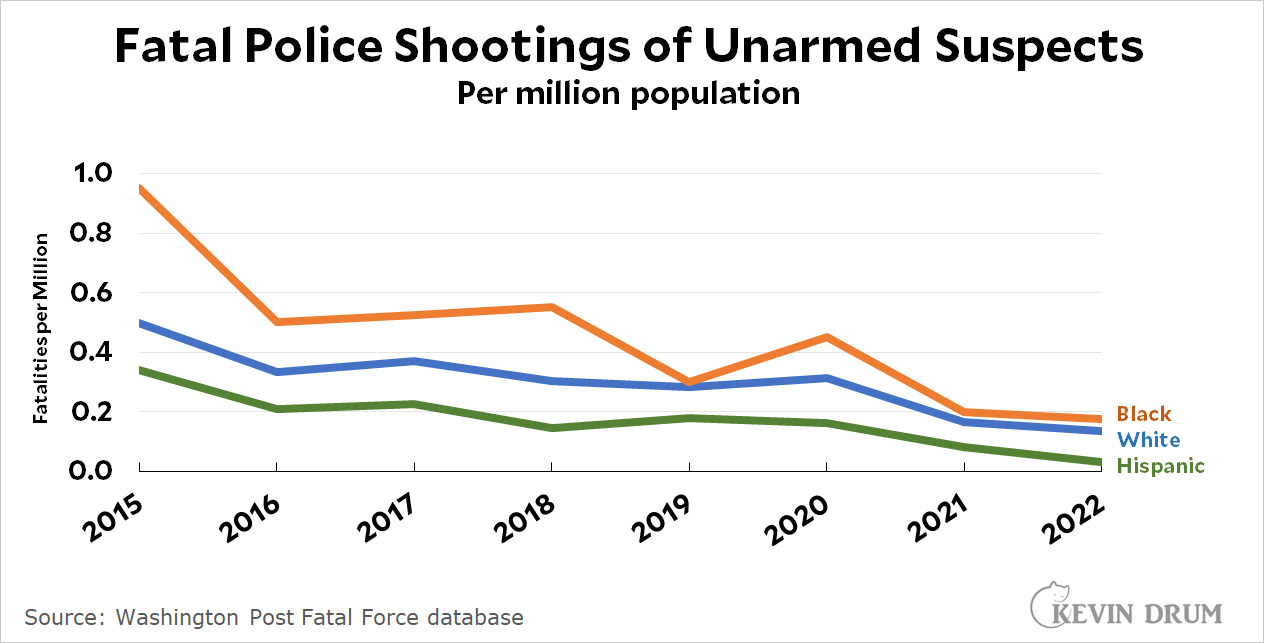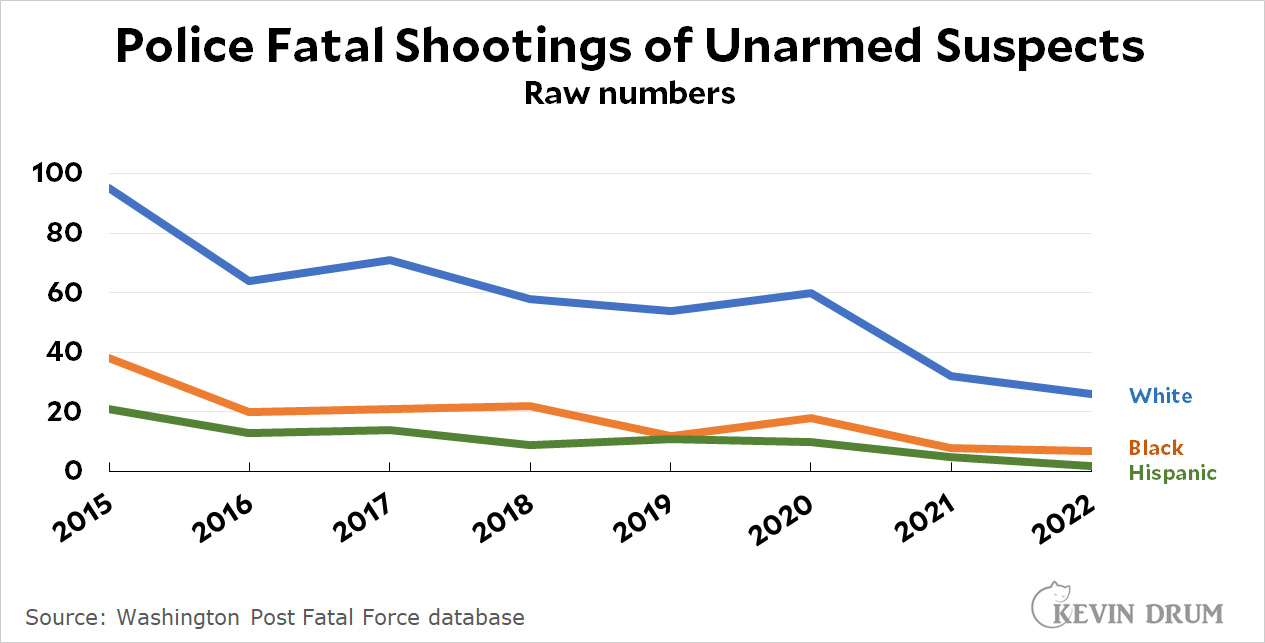Every year I like to take a look at the Washington Post's Fatal Force database to see if we're continuing to make progress on police shootings of unarmed suspects. We are:
 This is adjusted for population shares. Black suspects are still killed at the highest rate, but only slightly. Hispanics are killed at the lowest rate.
This is adjusted for population shares. Black suspects are still killed at the highest rate, but only slightly. Hispanics are killed at the lowest rate.
The raw numbers really drive this home:
 In 2022, only seven unarmed Black suspects were shot and killed by police. That's less than a fifth of the number killed in 2015.
In 2022, only seven unarmed Black suspects were shot and killed by police. That's less than a fifth of the number killed in 2015.
This is also a good example of how racial justice can benefit everybody. The campaign to reduce police shootings came primarily from the Black community, but it benefited both white and Hispanic communities as well. Shootings of unarmed white suspects have gone down from 95 to 26 while shootings of unarmed Hispanic suspects have gone down from 21 to 2.

But if you listen in to street police conversations, they can't do anything, the Law is broken rampantly.
It is but an anecdote of course, but a timely appearance in a news.bigtechcompany.com page: https://www.kron4.com/news/bay-area/more-police-headed-to-san-franciscos-marina-after-wedding-photographer-robbery/amp/
Amazing what a little police accountability can do.
Of course, overall crime is up sharply, and most of the victims are black, but as long as they're killed by other blacks, liberals like Kevin don't much care.
Cite your sources for “overall crime is up” as well as “liberals like Kevin don’t care” as long as blacks are killing other blacks.
Otherwise, you’re just an ignorant concern troll.
Good news! Of course from the standpoint of the freedumb caucus and the MAGA’ts, it will be considered bad news.
You are correct. MAGA is a dog whistle that means MAWA "Make America White Again".
My cousin could truly receive money in their spare time on their laptop. their best friend had been doing this 4 only about 12 months and by now cleared the debt. in their mini mansion and bought a great Car.
That is what we do.. https://earningblue.blogspot.com/
US homicides went from about 5 to 6.5 per 100,000 in the US from 2019 to 2020. (I couldn't find nationwide data for 2021.)
https://www.macrotrends.net/countries/USA/united-states/murder-homicide-rate
Multiplying 100,000 by 3,300 to get a US population of 330 million and then scaling up, we find the total number of homicides must have increased by about 4,950 over that same time period.
Granted, we can't attribute all those extra homicides to police "pull back" -- no doubt many were due to less employment, more social isolation, and fewer eyes on the street. But if even a tenth of these extra homicides were due to reduced policing, it swamps a dozen or so fewer deaths at the hands of police.
By almost any social calculus, that is a worse state of affairs. I think that includes how those deaths would be weighed by the communities with a disproportionate number of both police shootings and all other homicides.